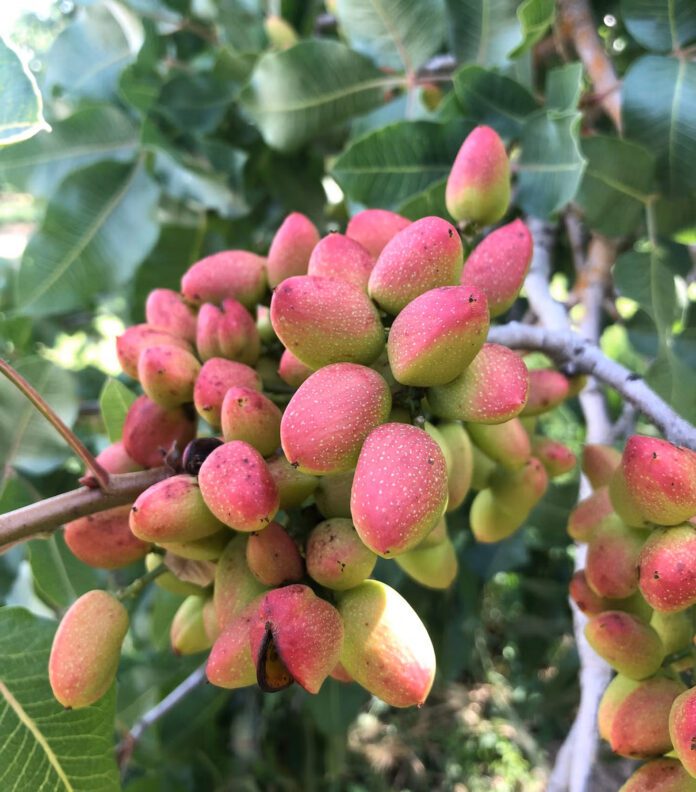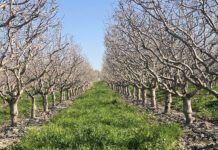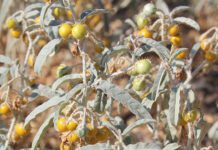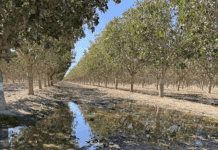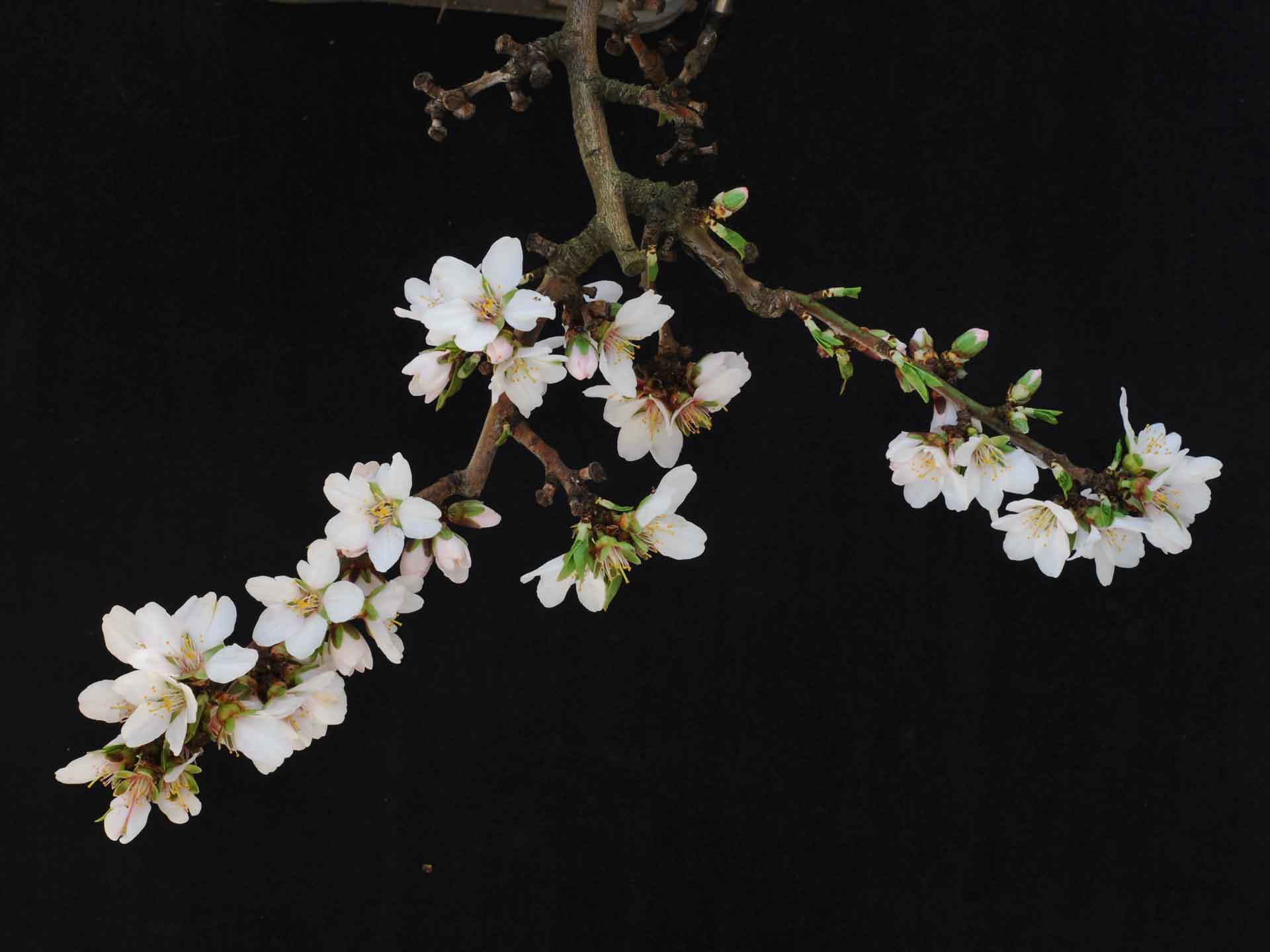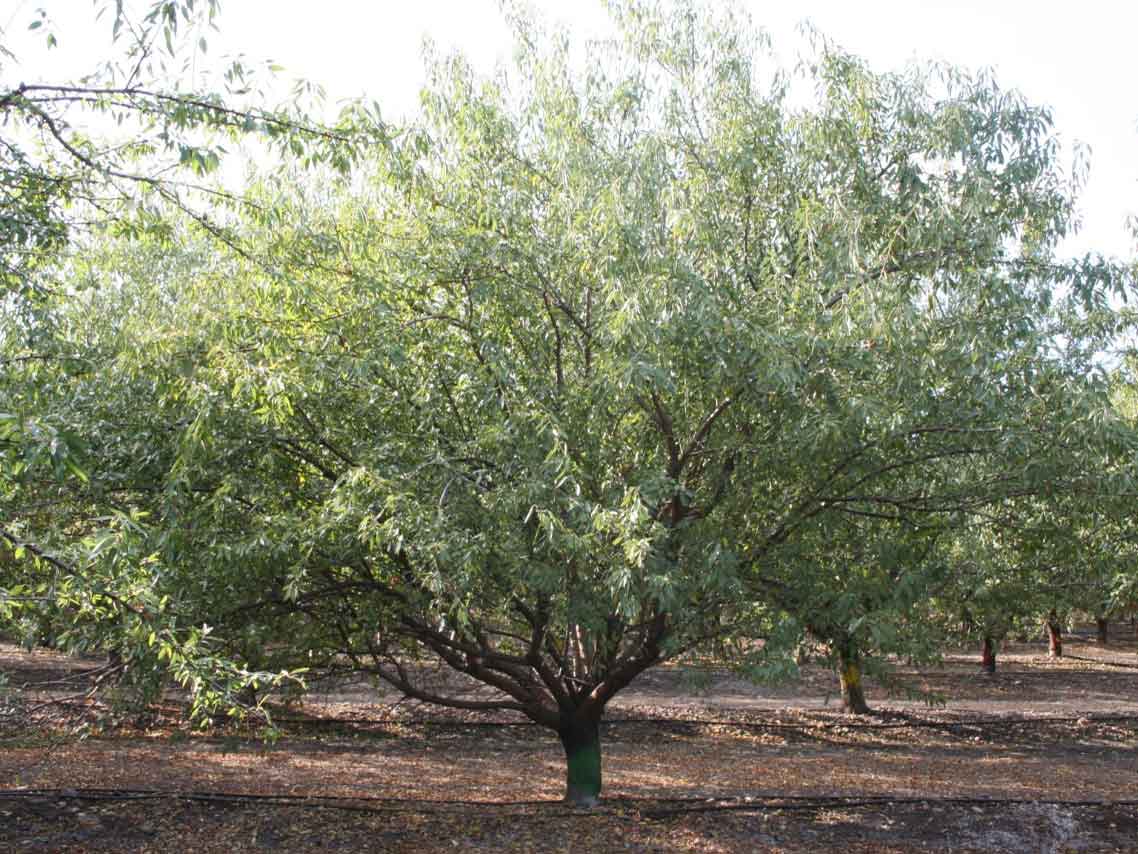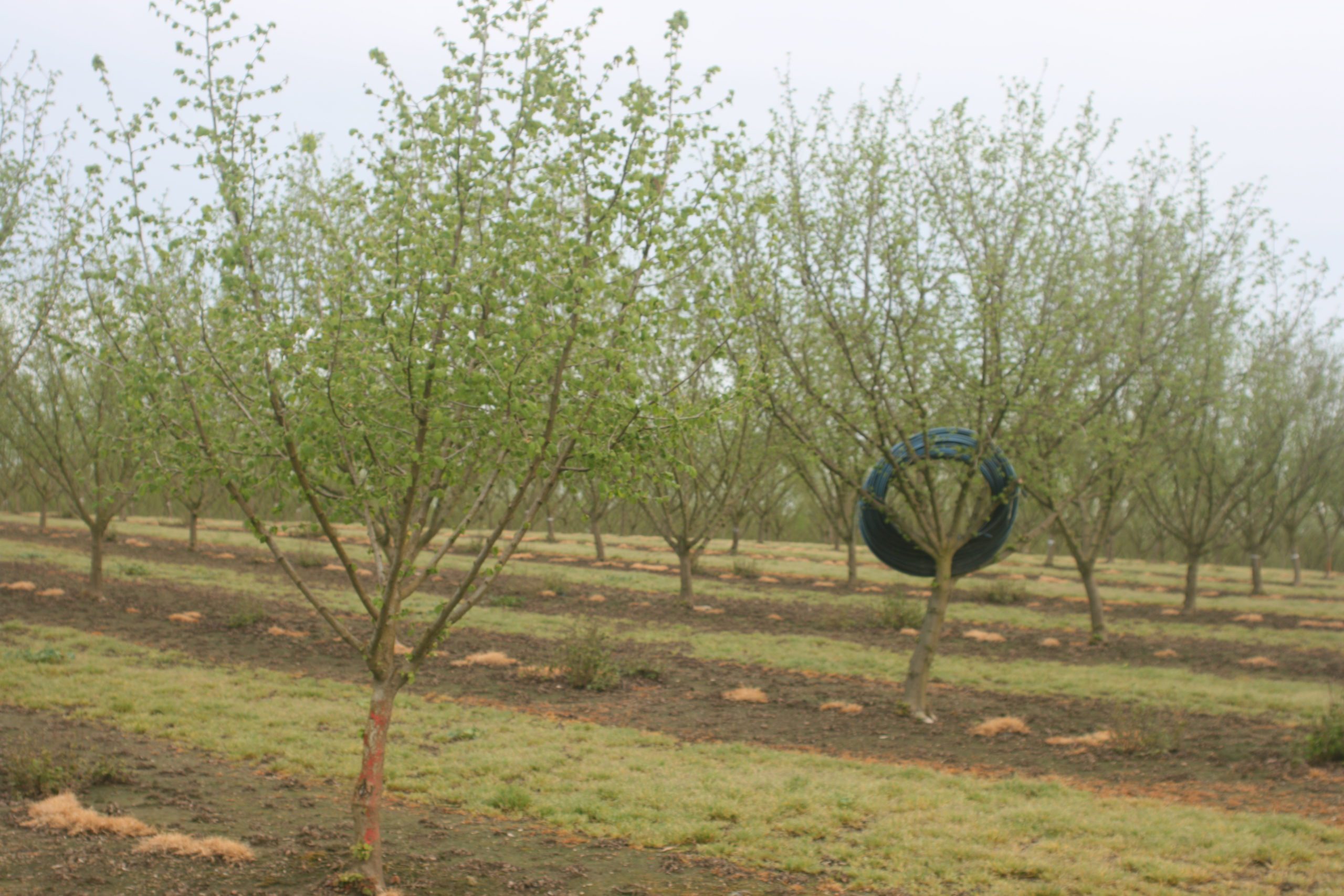Listen to the audio version of this article. (Generated by A.I.)
University of California researchers recently completed the most comprehensive genome sequence of the pistachio yet, and it may provide plant breeders with a genetic roadmap to develop improved cultivars.
While pistachio growers could eventually reap the benefits of new varieties, it won’t happen overnight, said Stephen Vasquez, executive director of the Fresno-based California Pistachio Research Board, which funded the research.
“It helps us better understand the genome, but it doesn’t make it so easy that we’re all of a sudden just developing new varieties,” he said. “But the benefit of at least having a map, now we can really start to figure out what our needs are.”
A genome is a complete set of DNA instructions found in a cell.
Having a genetic roadmap also opens the door to marker-assisted breeding, where researchers identify molecular markers associated with specific traits, said Grey Monroe, an assistant professor with the UC Davis Department of Plant Sciences. He also is the co-corresponding author of the research article recently published in New Phytologist. After breeders make a cross, they can test for the presence of the markers in progeny much earlier in development to ensure the trait is present, helping speed breeding.
As part of the UC genome sequencing project, researchers also detailed four stages of pistachio nut growth and maturation amid 14 developmental time points from fruit set to harvest. Bárbara Blanco-Ulate, an associate professor with the UC Davis Department of Plant Sciences and co-director of the UC Postharvest Center, led this portion of the project. She is the other co-corresponding author of the research article.
The information could help pistachio growers manage their crop more sustainably by providing them with better water management and harvest strategies.
Not only did the researchers look at the physical changes within the nut but also the genetic and molecular drivers responsible for traits such as shell hardening, kernel size and hull softening, Blanco-Ulate said. The genome sequence includes information about how different genes behave in nuts over the growing season.

Deciphering ‘Kerman’
For the project, the researchers focused on the Kerman variety, since it is the most important female cultivar in the U.S. This season, Monroe said he planned to survey producers with Kerman to see if they have any trees with unusual traits, such as blooming much earlier year after year than the rest of their orchard.
“How many mutations actually exist in Kerman?” Monroe said. “There’s a lot of tree variation, especially in citrus and grapes.”
Should he find outliers, he said they could sequence the trees. By comparing the results to their reference genome sequence, they may be able to identify genes responsible for the variations and their locations within the genome. This potentially could lead to new varieties with those traits.
Vasquez pointed to the need to develop new varieties that can withstand changing environmental conditions, such as reduced chill hours. That challenge isn’t unique to pistachios but all permanent crops in the Central Valley.
“What the valley used to look like, even 20 years ago and the amount of fog we used to get, that was perfect for a lot of our permanent crops,” he said. “And we’re not getting that type of chill now. That’s the type of work the genome [sequence] is really going to help pinpoint.”
Pistachios already do better than other nut crops dealing with brackish water. But Vasquez said both water quality and quantity will likely grow worse in the future. Developing new varieties that are even more water efficient and less susceptible to poor water quality will aid the pistachio industry’s resilience.
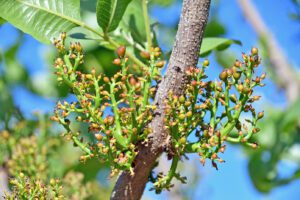
Speeding the Process
Monroe credited newer technology for helping them speed genome sequencing and produce more detailed and accurate results.
Sequencing about 90% of the human genome was completed in the early 2000s and cost about $1 billion to produce. The “huge ordeal,” as Monroe described it, enlisted hundreds of researchers from across the world.
“Now we can produce a new sequence in pistachios and do it as a lab at UC Davis for a tiny fraction of that cost,” he said.
Nevertheless, it took the UC Davis group about four years to complete the sequencing of Kerman and to have the results published. Having gained experience with the technique, Monroe said they should be able to generate genome sequences for other pistachio cultivars and other woody species much faster.
Monroe said their work mapped out nearly all of the genome, which is about 3 feet long when unraveled. Typically, it is rolled in a tight ball in the cell’s nucleus or genetic control center. Within the genome are DNA instructions built into chromosome pairings of just four letters: A, T, G and C.
He compared their feat to having 1,000 volumes of the classic novel A Tale of Two Cities that were torn into microscopic pieces.
“You don’t know what the book is; all you have is a pile of shredded pages that you have to piece together by looking at A-C-G-T,” Monroe said. “But if you had 1,000 letters, it would be much easier and you could have whole paragraphs,” and the results would be much clearer.
The same holds true for trying to map the genome. The longer sequences also resulted in much more accurate results compared to just looking at portions. Fortunately, Monroe said, computer programs have been developed to assemble the sequences into a genome.
This isn’t the first time that researchers have looked at the genetic makeup of pistachios, either. In the past, they had sequenced portions of the genome and focused mainly on vegetative tissue traits. By adding fruit tissues, they were able to tease apart nut development at the genetic level.
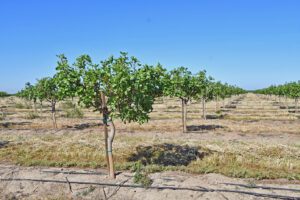
The ‘Fourth’ Stage
In the past, the growth of pistachio nuts was described in three stages, Blanco-Ulate said, citing UC’s Pistachio Production Manual. They were based on the growth of the hull and shell, shell lignification and kernel growth. And they were determined by measurements of the nut size, whole nut weight, kernel weight and shell firmness.
But she said there was limited information about how the kernel developed over time and how it related to environmental conditions including temperature and growing degree days.
After sampling thousands of nuts from various orchards over several growing seasons, the researchers developed a new growth model that adds a fourth stage – hull ripening and kernel maturation. The four-stage model was supported by physiological and chemical analyses, including hormones, fatty acids and volatile compounds, Blanco-Ulate said.
The researchers also modeled the physiological traits against heat accumulation and found nut development was closely regulated by growing degree day accumulation, allowing for accurate growth stage prediction across the seasons.
As part of the project, the researchers examined the kernel to identify genetic activities that governed nutritional quality, such as the accumulation of fatty acids, which are important for shelf life and have nutritional benefits. Among their findings were genes likely involved in oil accumulation in the kernels.
Knowing when the nut and kernel are growing most rapidly helps in scheduling irrigation to ensure adequate water supply during critical growth phases, potentially reducing water usage during less critical periods.
– Bárbara Blanco-Ulate, UC Davis
Benefits to Producers
Beyond the genetics, the four-stage model could provide growers with a better understanding of nut development, which would allow them to optimize various cultural practices, Blanco-Ulate said.
“Knowing when the nut and kernel are growing most rapidly helps in scheduling irrigation to ensure adequate water supply during critical growth phases, potentially reducing water usage during less critical periods,” she wrote in an email response.
In addition, Blanco-Ulate said their model could help growers identify the optimal harvest window. Harvesting too early can result in lower shell split percentages and increase the need for multiple shakes. Waiting too long increases the risk of hull breakdown, insect damage and shell staining.
With a better understanding of when kernels accumulate fats and antioxidants, she said producers also could determine the best harvest timing to optimize flavor and nutritional quality while minimizing defects caused by hull breakdown.
Certain pests and diseases are more prevalent during specific developing stages. By aligning pest management strategies with the growth stages, Blanco-Ulate said producers could more effectively protect their nut.

Vicky Boyd | Contributing Writer
A veteran agricultural journalist, Vicky Boyd has covered the industry in California, Florida, Texas, Colorado, the South and the Mid-South. Along the way, she has won several writing awards. Boyd attended Colorado State University, where she earned a technical journalism degree with minors in agriculture and natural resources. Boyd is known for taking complex technical or scientific material and translating it so readers can use it on their farms. Her favorite topics are entomology, weeds and new technology. When she’s not out “playing in the dirt,” as she calls agricultural reporting, Boyd enjoys running, hiking, knitting and sewing.







